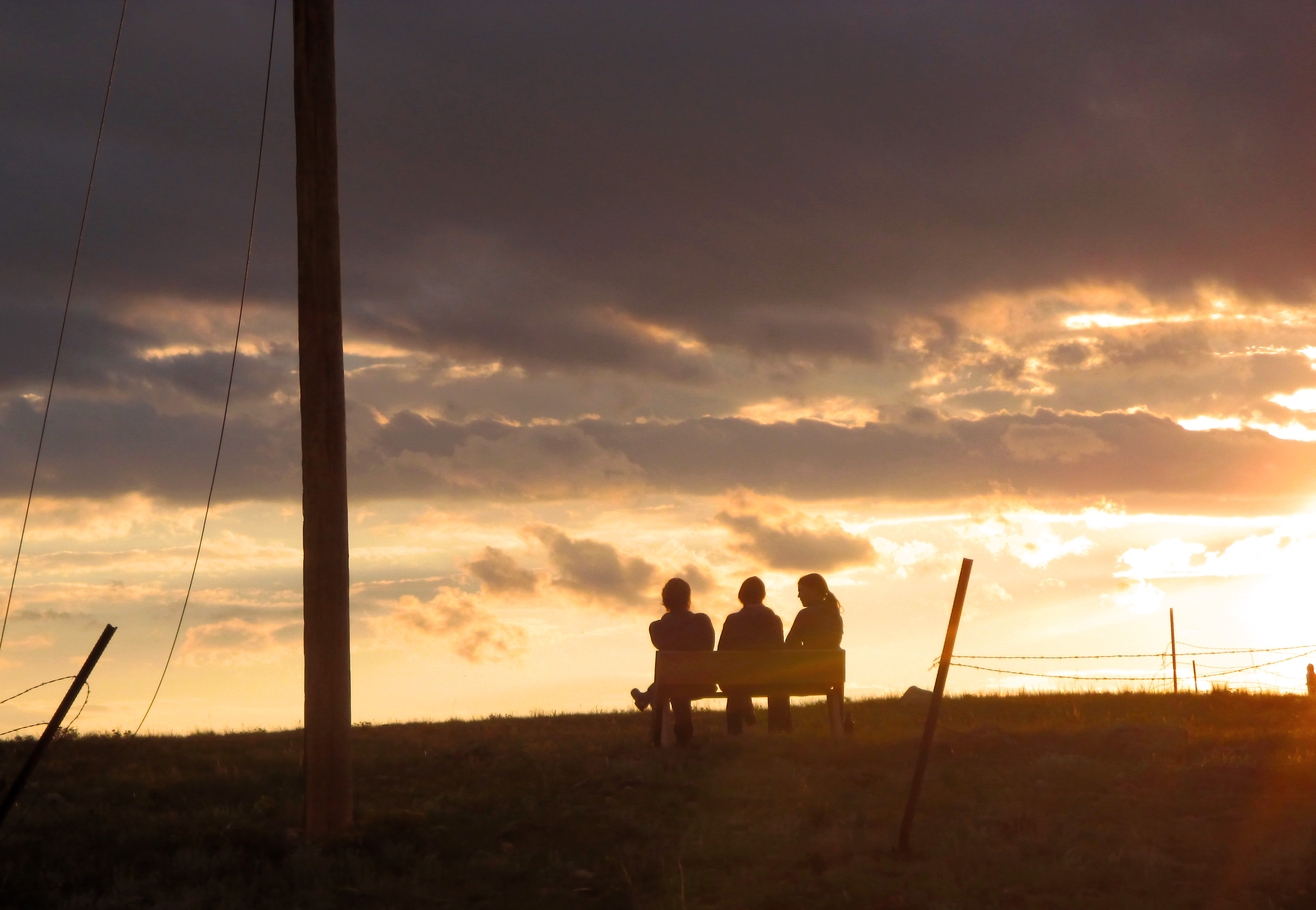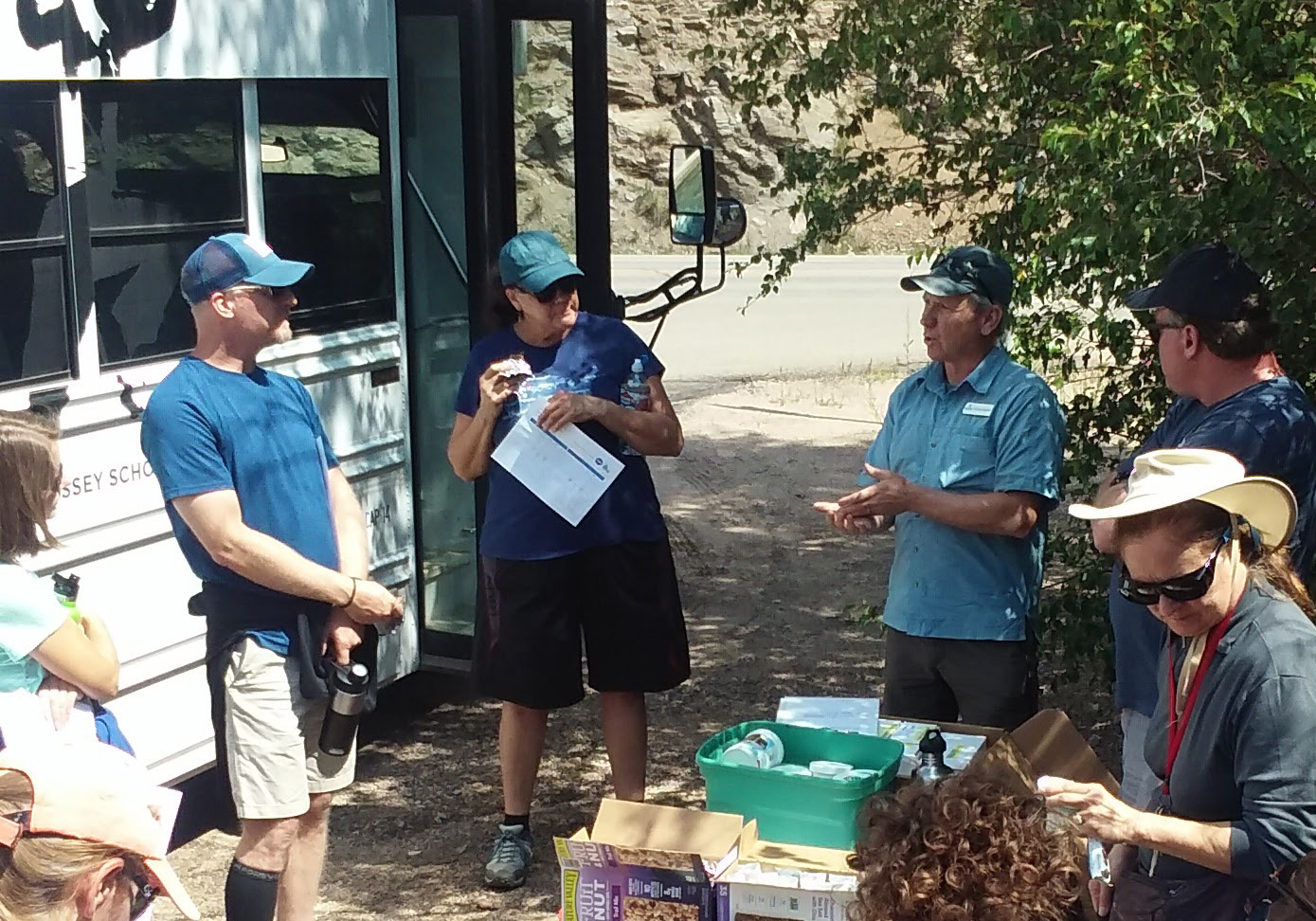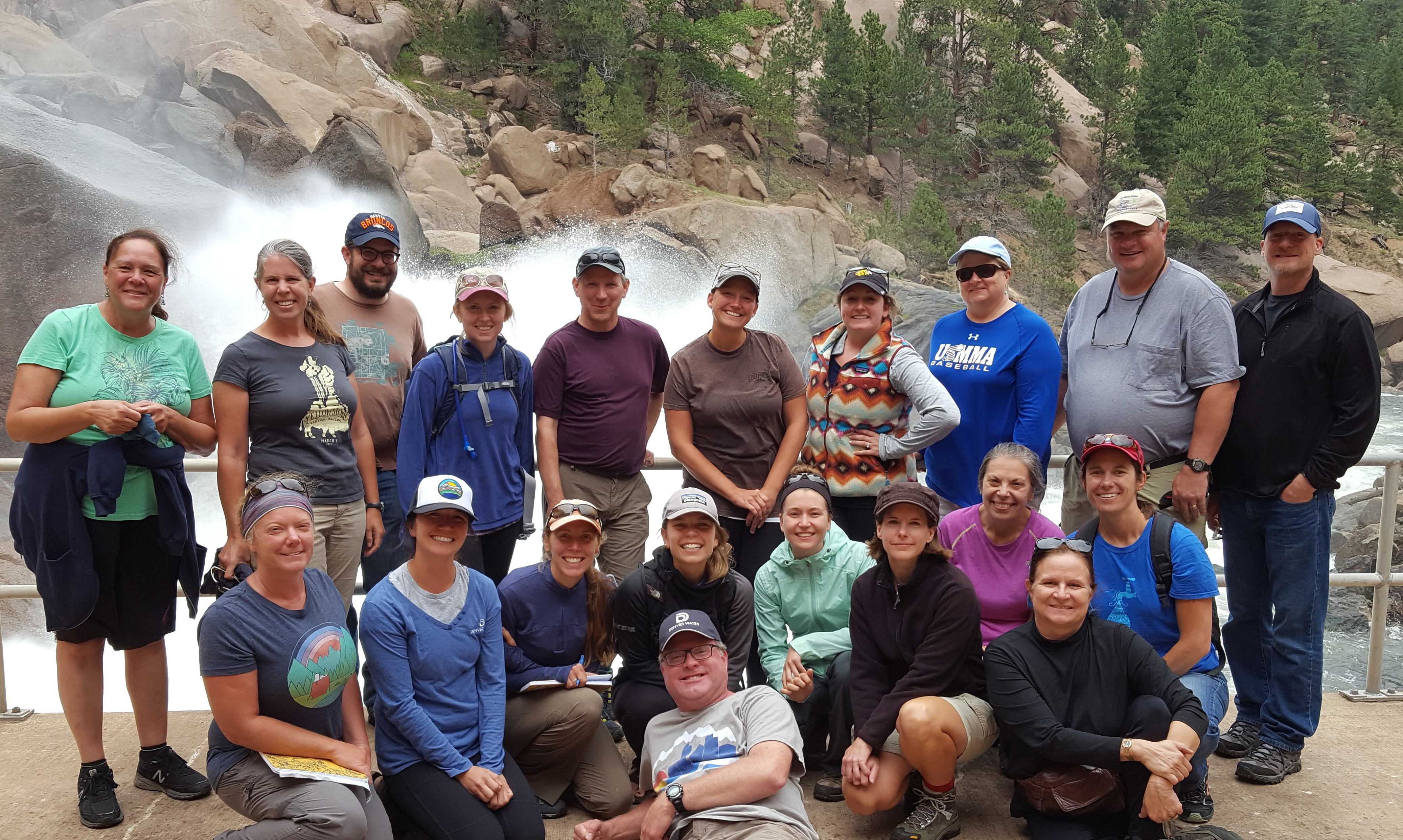
Taking teachers back to (water) school
Benjamin Franklin once said: “Tell me and I forget. Teach me and I may remember. Involve me and I learn.”
Using that philosophy of experiential learning, in August, youth education staff from Denver Water and Denver Public Works took 15 teachers from eight local school districts into the hills to learn how a water collection system works first hand.
During the two-day workshop, the educators toured three key facilities in the South Platte Watershed that help deliver snowflakes from high in the mountains to treatment plants in the city, where Denver Water staff turns them in to some of the highest quality drinking water in the world.
The snowmelt-to-tap equation appears straightforward enough, but like so many seemingly simple processes, the devil is in the variables. Just as environmental science, physics, chemistry, human behavior, climate and weather are fundamental subjects educators must teach their students, each play vital role in a watershed and its water quality.
And water quality is the key, according to Donny Roush, environmental educator for Denver Public Works: “It’s all about the quality. Keeping watersheds healthy, whether they are in the mountains or the stormwater systems in the city, it all revolves around that.”
For Denver Water, the higher the quality of the water entering a treatment plant, the healthier and better tasting the water will be when it reaches customers' faucets.
The journey begins
Day one of the workshop started at Roberts Tunnel, where water from Dillon Reservoir joins the North Fork of the South Platte after a 23-mile journey under the Continental Divide. Caretaker Jay Joslyn led the group through the ins and outs of operating the tunnel.
“The great thing about being a caretaker here is the job is different every day,” Joslyn said. “One day you’re working on the hydroelectric turbine, another you might be chipping ice on the river and another you could be inspecting the tunnel looking for problems. It’s never dull.”
While there, Denver Water educator Ellen Olson and Roush led a lesson on basic water quality testing, and the teachers checked the river’s water for levels of dissolved oxygen, pH, turbidity and temperature. Denver Water scientists analyze water from the same spot monthly checking similar parameters and more.
Stop number two on the tour was Antero Reservoir, Denver Water’s farthest upstream storage facility on the South Fork of the South Platte River near Fairplay, Colorado. There, the workshop participants got a taste of what it’s like to live and work at the remote facility.
As Antero caretaker William George started the discussion standing below the dam, the weather was sunny, warm and calm. A jump on the bus and a quick three-quarter-mile drive to the far side of the dam, and things changed dramatically.
In fewer than five minutes, monsoon clouds had rolled in, the wind picked up to a near gale and the temperature dropped well into the uncomfortable range.
“Wow, is it always like this!?!” a teacher yelled at George, despite being only a few feet away.
Pondering the 3-foot white caps that were chasing anglers on the shoreline below back to their vehicles, George deadpanned: “No, sometimes it’s like this and cold. A couple of years ago it was 52 degrees below zero, and that was before the wind chill.”
Best stop on the tour
After a night camping and fending off the recently hatched hoards of mosquitos at the Rocky Mountain Land Library’s Buffalo Peaks Ranch, the group journeyed down the South Fork of the South Platte River to Cheesman Reservoir. Most participants commented that visiting the 112-year-old dam was their favorite part of the workshop.
It’s not hard to see why. Cheesman is a study in complexity. The masonry dam itself is an architectural treasure, a National Historic Civil Engineering Landmark, and was young Denver’s first storage facility in the mountains. Looking upstream from the crest of the dam, even more than 15 years later the entire vista is dominated by the scar of the Hayman Fire. Looking downstream, below lies a stretch of gold-medal trout fishing that’s as good as any in the state.
For Denver Water staff, the dam is a complexity as well. The teachers peppered caretakers Ray Peterson, Jade Dreier and Jeff Rybolt with questions about life at the majestic facility.
What do you do every day? “Cheesman is Denver Water’s workhorse,” Dreier said. “We make more adjustments to the flows coming out of this reservoir in a day than most others in the system do in a month.”
What’s it like to live in such close quarters with the people you work with every day, Peterson laughed. “We also work hard to get along. Sometimes really hard.”
Where do your kids go to school? “Mine are home-schooled,” said Rybolt. Most of the teachers responded with a sympathetic “ohhhh.”
The final stop on the tour was back in the city at the Carson Nature Center along the banks of the South Platte River near Santa Fe Drive and Mineral Avenue. As a cold summer rain fell outside, director Skot Latona helped the educators build a model riparian habitat using the center’s river table inside. As Latona turned up the flows to mimic flooding, many teachers watched their miniature houses wash away, either because they built too close to the river or they had too little buffering vegetation. It’s not nice to fool Mother Nature.
Lessons learned
In the end, the educators in the workshop walked away having been involved in learning about water. They felt the icy cold on their hands as they tested it, squinted into its sting as it blew in their face, sensed with their entire bodies its power as hundreds of cubic feet per second jetted out of a dam mere feet below them. The art of teaching will show up in how each translates that experience for their students.
Lisa Carlson, workshop participant and recent addition to Denver Water’s Youth Ed program, summed it up well for everyone, “I’ve taught this, read about it, but it never really made sense until now.”



